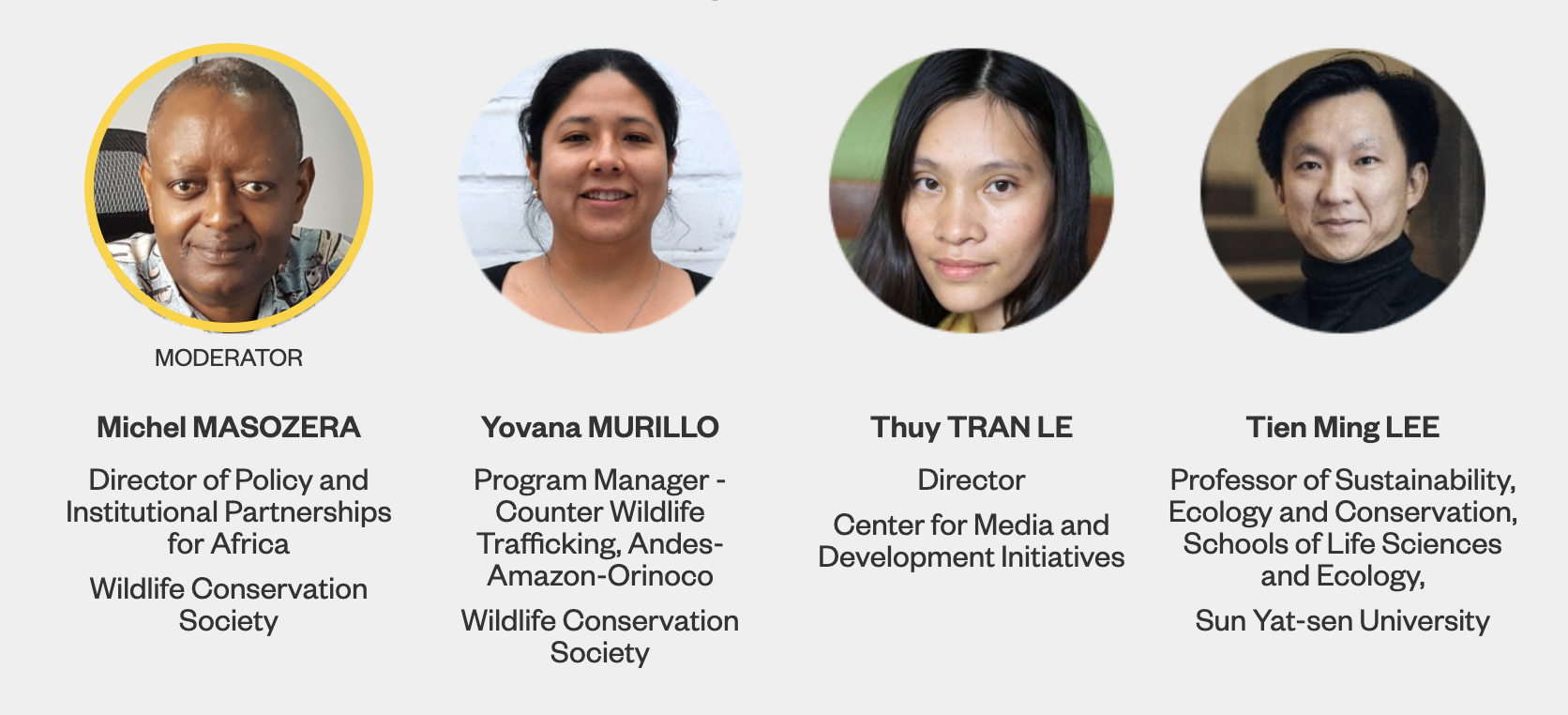Wildlife trafficking is devastating populations of many species across the globe. A large number of species are now threatened primarily by poaching due to an international demand for their specimens, parts and products. It takes a network to defeat a network; combating wildlife crime requires unprecedented coordination and cooperation between civil society actors, law enforcement agencies and the private sector.
These reflections were highlighted during the lab debate session "Strengthening global partnerships to combat wildlife crimes", held on June 16 during the European Development Days #EDD21. This session was co-organized by the Alliance for Wildlife and Forests and Partners Against Wildlife Crime; both initiatives funded by the European Union. Panelists from the Wildlife Conservation Society (WCS), Sun Yat-Sen University of China and the Center for Media and Development Initiatives (MDI) of Vietnam presented on the challenges and case studies of actions against wildlife trafficking in Latin America, mainly the Amazon, and Asia region.
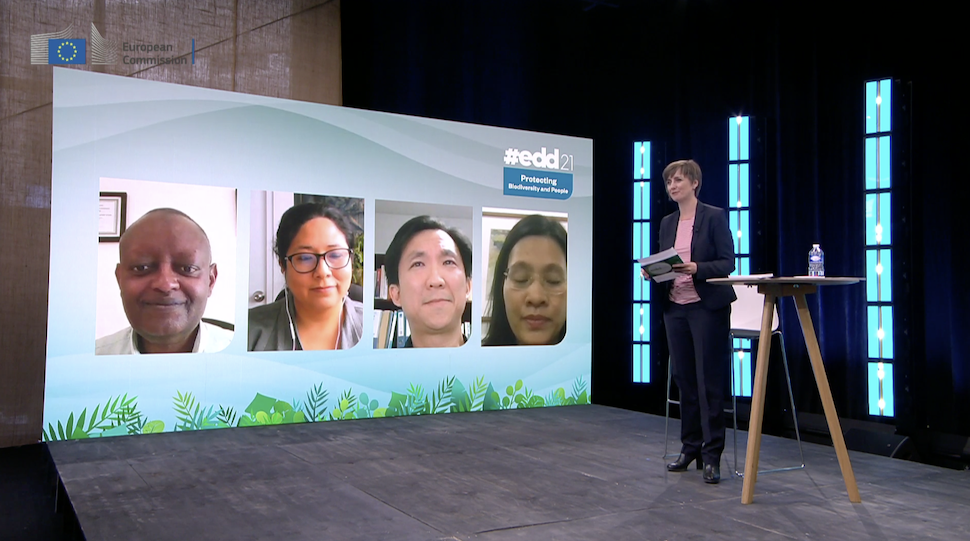
Dr. Michel Masozera, Director of Policy and Institutional Partnerships for Africa at WCS, called for greater coordination and cooperation from different sectors to counter wildlife trafficking. He highlighted the need to address corruption and the lack of good governance, noting that nowhere is corruption more pervasive, transcontinental, and systemic than in the natural resources sector in Africa. In return, this also leads to loss in direct incomes, jobs, peace and security.
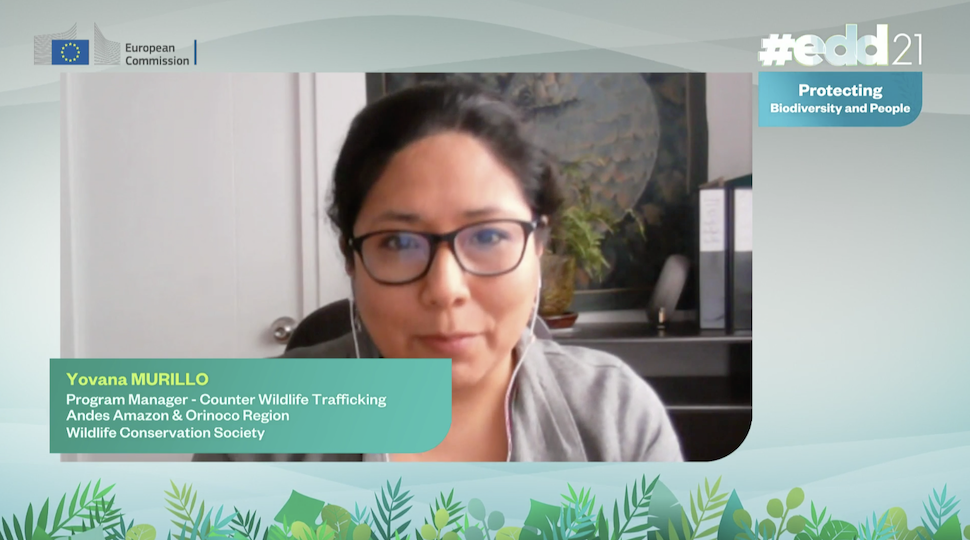
Ms. Yovana Murillo, Program Manager for Counter Wildlife Trafficking in Andes-Amazon-Orinoco at WCS, presented the Alliance for Wildlife and Forests, a regional action funded by the EU, which seeks to tackle wildlife and timber trafficking through the engagement of civil society and cooperation with and between authorities of Bolivia, Colombia, Ecuador, Peru and border areas with Brazil. Some of the main challenges identified so far include the insufficient political attention of wildlife crime as a transnational crime, the lack of available and accessible data, insufficient mechanisms and structures for the exchange of information and follow-up of regional and international criminal cases impacting wildlife and/or forest, the low number of prosecution of criminal network members, and the insufficient investment on actions that result in consumer behavioral change.
Prof. Tien Ming Lee, Sustainability, Ecology and Conservation Schools of Life Sciences and Ecology at Sun Yat-sen University, presented his work on behavioral science. As part of the Partners Against Wildlife Crime action, his team is designing, testing, and evaluating new behavioral science-based illegal wildlife demand reduction campaigns in China. It is the first time demand reduction interventions are carried out across multiple taxa and product types across sub-populations. The most effective campaigns will then be selected for scaled-up campaigns for the larger target consumer populations. Based on their innovative work, they plan to develop a set of useful solutions and approaches in identifying feasible and effective interventions for reducing demand for illegal wildlife products in China.
Ms. Thuy Tran Le, Director, Centre for Media and Development Initiatives in Vietnam, highlighted various case investigations on wildlife trafficking in the media. She noted however there still seems to be an absence of systemic and cross-border investigations. According to her, it is therefore critical to undertake systemic investigations to expose wildlife trafficking in local media. Ms. Tran Le also proposes more cross-border investigations to provide a bigger picture to the public.
In a short video, Mr. Liu Huan, Director for Community Safety and Risk Operation at Douyin, the Chinese version of short video app TikTok, highlighted how social media platforms combat online illegal wildlife trade.
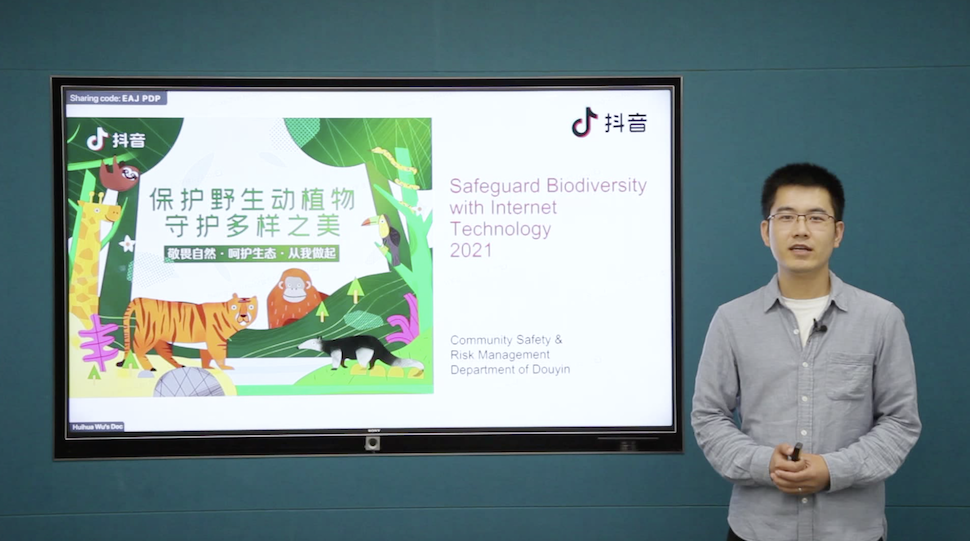
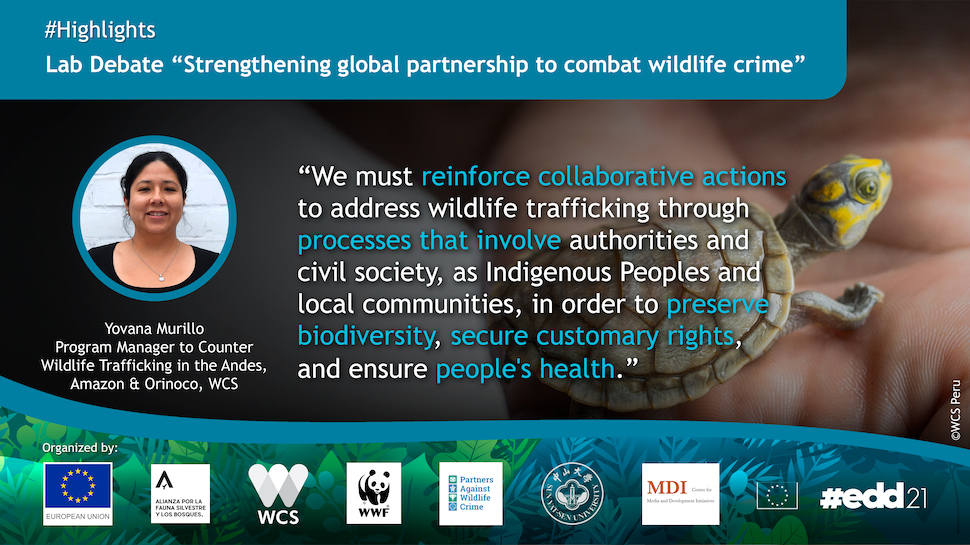
On Twitter:
